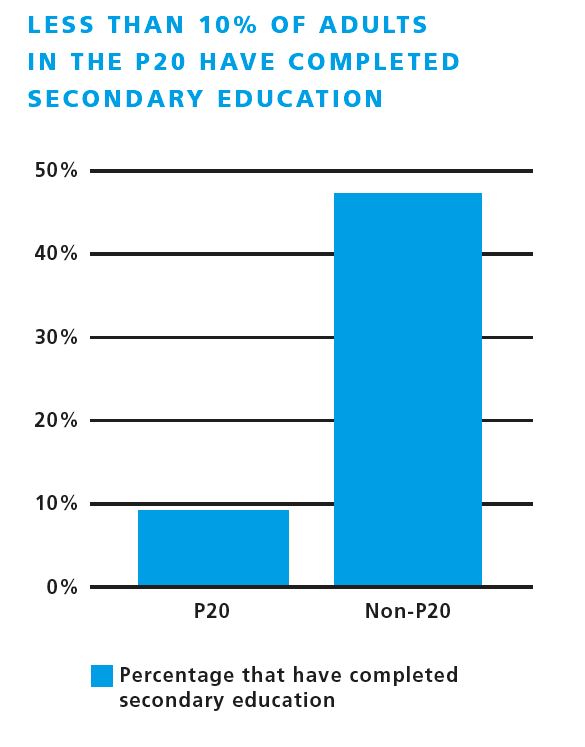Agenda 2030 and the Sustainable Development Goals have brought us a global commitment to end extreme poverty and ensure no one is left behind. For this ambition to be met, we need to know who the poorest people in the world are, understand their lives, and ensure they are included in progress. The P20 Initiative is a project focusing on the people who are in the poorest 20% globally. It aims to track their progress and improve information about their lives in order to ensure no one is left behind in efforts to tackle poverty. This briefing focuses in on education.
The less education a person has received, the more likely they are to be among the people in the poorest 20% of the world. Education is a key pathway out of poverty and every additional year of schooling increases an individual’s earnings by up to 10%.
Less than 10% of adults in the P20 have completed secondary education.
Agenda 2030 is about fighting poverty and making meaningful progress across all sectors for all people. To fulfill the idea of “leaving no one behind”, we have to know who is included in progress in each sector and who is being left out [1].
The P20 has had significantly less access to education than the rest of the world. This holds people back from opportunity and restricts their life chances.
- 67% of adults in the P20 have not completed primary school.
- Only 9.7% ofadults in the P20 have completed secondary education, compared with 46% of adults in the rest of the world.
- Less than 3% of people who have had any higher education are in the P20.
Data suggests progress for youth in the P20. If we look at only the younger generation (15-25), the percentage of those in the P20 with primary education increases to 57%, as compared to 33% for those over 25.[2]
The P20 Initiative will monitor progress on inclusion in education in support of the Sustainable Development Goal indicator on educational attainment in primary and lower secondary school.
Read more about our P20 Initiative
Explore further P20 briefings on:
Civil Registration Systems and Vital Statistics
